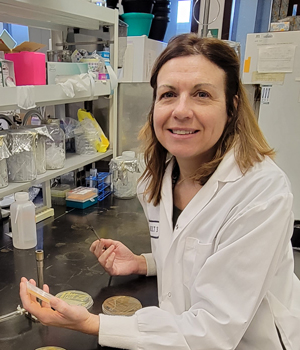Back to program
Green and Efficient Plant
Wednesday, November 22, 2023
Room 302AB - Nano One
Today’s processing plant is a paradox. Compared with upstream and downstream mining operations, ore treatment processes generally have the most advanced levels of technological and digital maturity. However, the technology platforms selected at the feasibility stage of a project condition and hinder substantially the adoption of new technologies over the life of the plant. For example, the grinding process is characterized by its energy inefficiency. This is a well-known and documented fact. And yet we have been grinding in the same way for decades. We could start thinking along similar lines about separation technologies, as well as concept validation of treatment technologies for critical and strategic mineral substances.
The political message is clear. The next decade will be marked by a lack of energy power and rigorous sustainable management inspired by ESG criteria. We have reached that point. We need to implement concrete solutions with tangible impacts. The aim of this session is to take stock of the current situation, stimulate dialogue and reflection, and bring together the elements to sketch out a roadmap that will take us towards the processing plant of tomorrow.
9:00 a.m.
Welcome Address
9:05 a.m.
Grinding: Capitalizing on Existing Technologies
Conference details
In the mining industry, ball milling is the preferred technology for bringing ore to release size in preparation for concentration processes. This stage consumes around half the energy required for milling in the mining industry. In collaboration with the University of British Columbia (UBC), Weir Minerals, Koppern Equipment, Thyssenkrupp, Derrick Corporation, Newmont, Minerai de fer Québec, Copper Mountain, and Detour Gold, Corem has conducted a project to replace ball mills with a HPGR (High Pressure Grinding Roller). Although slow compression is recognized as the most energy-efficient milling approach, the case for using HPGRs instead of ball mills needs to be made.
Corem and UBC's work on two case studies has demonstrated, on a semi-industrial scale, that milling energy was reduced by over 60% by replacing the ball mill with an HPGR mill. Taking into account the total consumption of the ball mill circuit, the energy consumption is reduced by more than 50%.
9:30 a.m.
Innovative Approaches to Grinding: CAHM Technology
Conference details
The CAHM Technology platform - Highly efficient grinding has the potential to significantly reduce GHGs
What would you do if your operation had additional basic supplies that it didn't need? Increase production? Integrate additional electrification initiatives. The CAHM Platform technology has the potential to reduce energy consumption by 65% in the milling circuit.
9:55 a.m.
Mining biotechnologies - Overview
Conference details
Biotechnologies have demonstrated their potential for transforming unprofitable mineral reserves into an economically exploitable resource. Among these, bio-lixiviation and bio-oxidation, catalyzed by acidophilic bacteria, are proven, environmentally-friendly and cost-effective technologies, notably used for the extraction of copper from sulphide minerals and the liberation of gold from refractory sulphide ores. In recent years, however, the climate emergency has led to the development of new biotechnological approaches aimed primarily at reducing greenhouse gas production and energy consumption compared with traditional extraction techniques, as well as building or solidifying the supply chain for critical minerals to support Canada's energy transition. In parallel, the mineral carbonation of CO2 in mining and metallurgical tailings, catalyzed by micro-organisms, is proving a promising strategy for mitigating the impacts of global warming and reducing the industry's CO2 footprint. Some of these biotechnologies, unlike the first mentioned, have to adapt to an alkaline mineral matrix where the acidity cascade triggered by acidophilic micro-organisms (H2SO4 production) cannot take place. These technologies rely on heterotrophic micro-organisms that produce organic acids to reduce pH and solubilize metals.
This presentation therefore focuses on recent developments in mining and other related biotechnologies. First, advances in gold extraction using cyanide-producing bacteria (bio-cyanidation) will be presented, and the possibilities of in situ extraction will be discussed. The second point focuses on the biological extraction of critical minerals from secondary resources such as mine and metallurgical tailings, and for the recycling of lithium batteries, which are faster and more affordable ways of obtaining critical minerals than the option of opening new mines. Finally, a review of means to optimize mining bioprocesses and increase their stability and robustness will be presented, including micro-encapsulation of bacteria to protect them from adverse conditions, enzyme immobilization, and enhancement of microbial strains by accelerated mutagenesis technologies.
10:35 a.m.
Improvement Objectives for Quebec's Lithium Concentration and Recovery Process
Conference details
This presentation covers the improvements targeted by a partnership program between Corem and CTRI within Elements08 and with industrial partners. The program covers site geometallurgy, mineral valorization other than lithium-bearing minerals, spodumene concentration avenues and purification avenues to recover lithium.
11:00 a.m.
Using Optics for Green Mining: Pioneering Sustainable Resource Extraction through Technological Innovation
Conference details
The extraction of natural resources has long been associated with negative environmental impacts and unsustainable practices. However, in recent years, the concept of green mining has emerged as a promising solution to mitigate these negative impacts and promote sustainable resource extraction. This presentation explores the intersection of green mining and optics, highlighting the transformative potential of optical technologies in promoting environmentally friendly mining operations as well as new tools for characterizing carbon sequestration performance.
Optics, as a branch of physics dealing with light and its properties, offers many applications and benefits in green mining using spectroscopy. Optical technologies can be useful in various aspects of mining, including exploration, production and resource recovery. Optical spectroscopy techniques enable more precise, accurate, reliable, non-invasive and real-time exploration. They lead to better mineral identification and reduced environmental disturbance, not to mention significant cost reductions from the prospecting stage through to mine reclamation.
The integration of optics into resource recovery processes holds great promise for greener mining practices. Optical sorting technologies enable the separation and selective recovery of valuable minerals, reducing the need for energy-intensive and environmentally damaging extraction methods. In addition, optical methods can be used to detect and extract traces of valuable elements from waste streams, contributing to the concept of the circular economy, while minimizing the amount of wasted resources.
This presentation focuses on the transformative role of optics in advancing the principles of green mining. By leveraging optical technologies, mining operations can achieve greater efficiency, while minimizing environmental impacts and promoting sustainable resource management. Adopting these innovative practices not only benefits the mining industry, but also contributes to the conservation of natural ecosystems and the long-term well-being of local communities.
11:25 a.m.
A Green Future Ahead for the Mineral Plant
Conference details
This presentation will explore the near future of mineral processing plants. By looking at the global energy consumption of these plants, we will see the potential impact of process control and digital innovations on our environmental footprint. We will present concrete examples of new technologies such as economic predictive control. We will then put forward our vision of the processing plants of the future.
11:50 a.m.
Real-time Control of a Timber Finishing Line and its Interdisciplinary Applications in the Mining Industry
Conference details
At the dawn of what many are describing as the fourth industrial revolution, decision-making must now take place in real time, in an automated way, while adapting to the disruptions and unforeseen events that frequently occur in an industrial context. A number of business sectors need to become more agile, intelligent and interconnected in all areas of the production chain, from raw material acquisition to customer sales. The aim of this presentation is to showcase an emerging technology based on artificial intelligence that can be used to optimize the productivity of a lumber finishing line in real time, and to propose cross-disciplinary applications of this technology in the mining industry.










